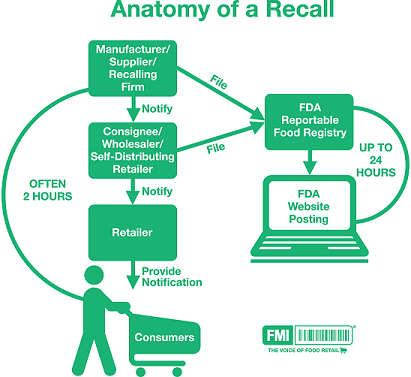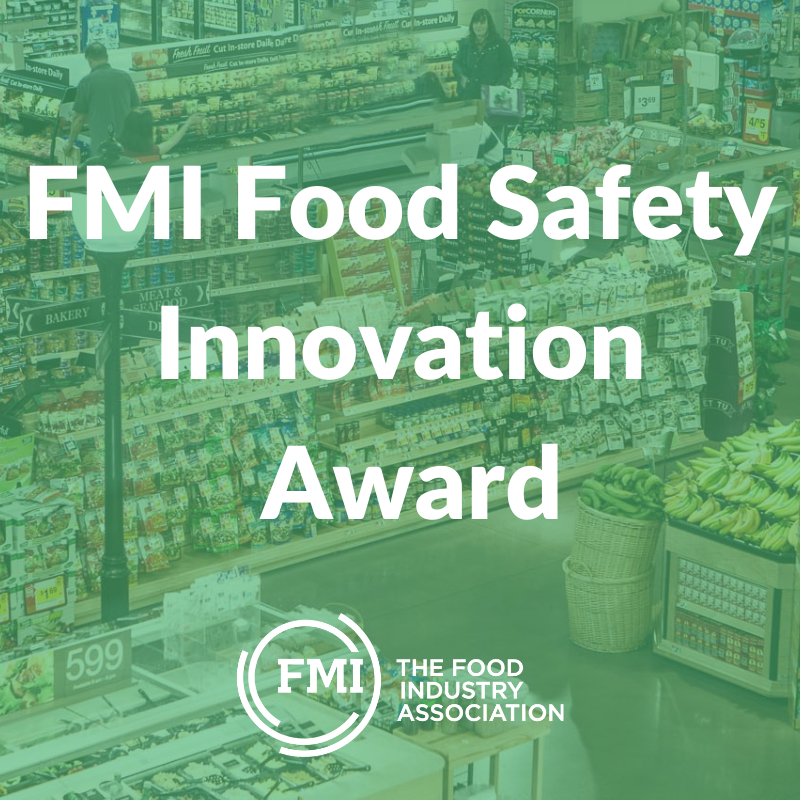By: Hilary Thesmar, PhD, RD, FMI Vice President, Food Safety Programs, Food Marketing Institute 
To celebrate September, National Food Safety Education Month, FMI recently joined forces with the Safe Quality Food (SQF) Institute and the Partnership for Food Safety Education for a Twitter chat using #FoodSafety365. Here are answers to the top questions about food recalls:
Why does a food recall happen?
SQF Institute: There are three main food recall reasons: a biohazard like Listeria, allergens or other chemical hazards are found, or a physical hazard is found. Having a food safety plan in place reduces food recalls.
FMI: Remember, a food recall is not a failure. It's admitting something went wrong and taking responsibility. Managing a recall successfully depends on preparation and communication that is fast, accurate and complete.
Partnership for Food Safety Education: Here are some consumer recall rules: 1) spread the word and 2) check your home for the item. Less than 60 percent of Americans check for the item in their home. Learn more on our Recall Basics webpage.
What systems do grocery stores have in place for food recalls?SQF Institute: For suppliers, within 24 hours they should notify their Certification Body, SQFI and retailers of any issues.
FMI: Most retailers remove product from shelves within two hours after learning about a recall. Grocery stores use different methods to notify consumers of recalls. The circumstance of a food recall often determines how a store handles informing its customers.
Partnership for Food Safety Education: At home, identify any recalled products. Match identifying marks on the product with the recall notice and contact the store where the suspected product was purchased. Learn more on our Recall Basics webpage.
Food safety experts live food safety 365. Visit www.FMI.org/FoodSafety365 for food safety resources.


 Industry Topics address your specific area of expertise with resources, reports, events and more.
Industry Topics address your specific area of expertise with resources, reports, events and more.
 Our Research covers consumer behavior and retail operation benchmarks so you can make informed business decisions.
Our Research covers consumer behavior and retail operation benchmarks so you can make informed business decisions.
 Events and Education including online and in-person help you advance your food retail career.
Events and Education including online and in-person help you advance your food retail career.
 Food Safety training, resources and guidance that help you create a company food safety culture.
Food Safety training, resources and guidance that help you create a company food safety culture.
 Government Affairs work — federal and state — on the latest food industry policy, regulatory and legislative issues.
Government Affairs work — federal and state — on the latest food industry policy, regulatory and legislative issues.
 Get Involved. From industry awards to newsletters and committees, these resources help you take advantage of your membership.
Get Involved. From industry awards to newsletters and committees, these resources help you take advantage of your membership.
 Best practices, guidance documents, infographics, signage and more for the food industry on the COVID-19 pandemic.
Best practices, guidance documents, infographics, signage and more for the food industry on the COVID-19 pandemic.
